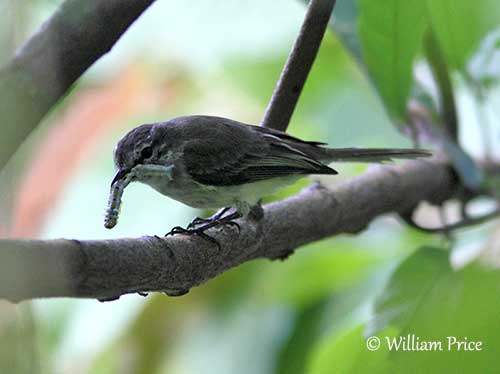
Fr: Elénie de la Jamaïque
Ang: Jamaican Elaenia
All: Weißkehl-Olivtyrann
Esp: Fiofío Jamaicano
Ita: Elenia della Giamaica
Nd: Jamaica-elenia
Sd: jamaicaelenia
Photographers:
Ken Havard
My Bird Gallery & Flickr gallery 1 & Flickr gallery 2
William Price
PBase-tereksandpiper & Flickr William Price
Dubi Shapiro
Dubi Shapiro Photo Galleries
Text by Nicole Bouglouan
Sources:
HANDBOOK OF THE BIRDS OF THE WORLD Vol 9 - by Josep del Hoyo - Andrew Elliot - David Christie - Lynx Edicions - ISBN: 8487334695
BIRDS OF THE WEST INDIES – by Herbert Raffaele, Kristin Williams et Tracy Pedersen – Helm – ISBN: 9780713649055
A Photographic Guide to the Birds of Jamaica De Ann Haynes-Sutton, Yves-Jacques Rey-Millet, Audrey Downer, Robert Sutton – Editeur: Bloomsbury Publishing, 2010 – ISBN: 1408133229, 9781408133224 – 336 pages
Neotropical Birds – Cornell Lab of Ornithology
Jamaican Elaenia
Myiopagis cotta
Passeriformes Order – Tyrannidae Family
INTRODUCTION:
The Jamaican Elaenia is endemic to Jamaica where it frequents wet forests at mid-elevations, and also bushy areas and coffee plantations. It feeds mainly on insects caught by sallying from perches and gleaning from vegetation. The nest is a cup-shaped structure, well-hidden in vegetation.
The Jamaican Elaenia is usually uncommon, but it is widespread throughout its restricted range. It is vulnerable to habitat destruction and use of pesticides, but the species is not currently globally threatened.
DESCRIPTION OF THE BIRD:
Biometrics:
Length: 12-13 cm
Weight: 12-13 g
The Jamaican Elaenia has brownish-olive upperparts and pale yellow underparts.
The upperwing is dusky olive, with pale yellow outer webs to inner flight-feathers. The tail is dusky olive too, with olive-yellow edges.
On the underparts, chin and throat are grey to whitish. The breast is pale yellow, but rest of underparts is brighter yellow.

On the head, the crown is darker than the upperparts. We can see a straight, dark grey eyeline, and a pale yellowish-white supercilium. The orange-yellow crown patch is often concealed.
The short bill is black. The eyes are dark brown. Legs and feet are blackish.
Male and female are similar.
The juvenile resembles adults, but it lacks the crown patch, and the underparts are pale grey, but yellower on belly.
RANGE:
The Jamaican Elaenia is found only in Jamaica.
HABITAT:
The Jamaican Elaenia is widespread from lowlands to mountains, but it is mainly found in wet forests at mid-elevations. It also frequents bushy areas, coffee plantations, open woodlands and forest edges, scrublands and dry forests. The species occurs from sea-level to 2,000 metres of elevation.
CALLS AND SONGS: SOUNDS BY XENO-CANTO
The Jamaican Elaenia gives rapid, high-pitched calls “ti-si-si-sip” or “si-sip” with lower last note.
BEHAVIOUR IN THE WILD:
The Jamaican Elaenia feeds primarily on insects and larvae, and occasionally takes some berries, but rarely.
It hunts by sallying from perches, and by gleaning prey items from vegetation while flying. It typically feeds between 4 and 8 metres above the ground. It forages alone or in small flocks.

This species is very cryptic and often overlooked, usually detected by call.
The yellow-orange coronal patch is usually displayed when the bird is excited, especially during the displays.
The Jamaican Elaenia is resident in Jamaica.
It is very agile in flight, as usual in Tyrannidae. It hunts in flight close to the vegetation.
REPRODUCTION OF THIS SPECIES:
The Jamaican Elaenia breeds between March and June.
The cup-shaped nest is made with plant materials. It is usually well-concealed in vegetation, especially Spanish moss (Tillandsia usneoides).
The female lays three dull creamy-white or buffy eggs with some dark markings around the broader end.
No more information.
PROTECTION / THREATS / STATUS:
The Jamaican Elaenia has restricted range in which it is uncommon. However, the species is widespread from lowlands to high mountains.
It is vulnerable to habitat loss and degradation, through logging and forest clearance for pine and coffee plantations. The over-use of pesticides is also an important threat for this species.
But currently, the Jamaican Elaenia is not globally threatened and evaluated as Least Concern.
